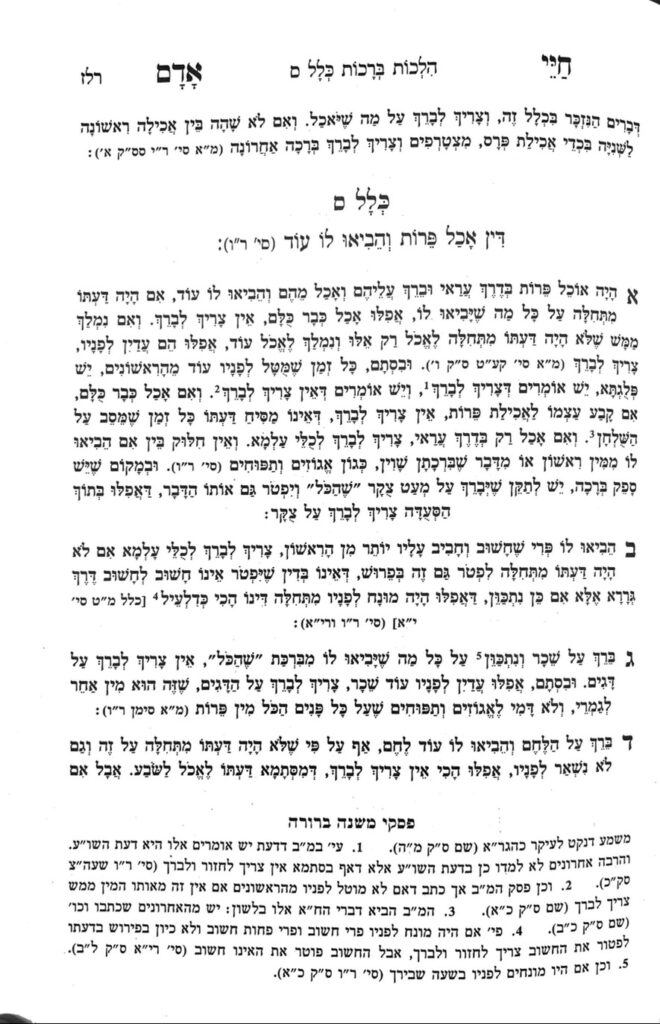We are beginning siman 4. The siman continues discussing a situation in which one made a bracha without any explicit daas (but rather stam daas), and now wishes to bring a new food to the table.
We learned that the Chayei Adam’s opinion is that the bracha will only extend if there is leftover of the original food on the table. However, according to the Mishnah Berurah, the bracha will extend both when there is leftover of the original food on the table, and when the new food is of the same type as the food upon which the bracha was made.
The Chayei Adam writes that if one makes hamotzi, finishes all of the bread in front of them, and now wishes to bring more bread to the table, they are able to eat more bread without making a new bracha rishona. This halacha is contrary to the Chayei Adam’s opinion until now, that some of the original food must be leftover on the table in order for the original bracha to extend. The Chayei Adam explains that since the nature of bread is to keep eating until one is satiated, we can assume that this possibility was in the back of a person’s mind at the time of the bracha. Therefore, the stam daas is to include for such a possibility, and the original bracha can extend.
However, if a person made a hamotzi with explicit daas to limit their bread consumption to a specific amount, and then they change their mind, they create a situation of nimlach, and require a new bracha rishona. Similarly, if one decided they are finished eating their meal, and is then nimlach to eat more, they would require new brachos rishonos.
We learn from the Chayei Adam that the way in which people eat can generate a stam daas. Although the Chayei Adam discusses this idea only by bread, it could be that we can extend it to other food situations. We will discuss this in future shiurim, be’ezras Hashem.
Summary
- The stam daas when it comes to eating bread is to assume that one will eat bread until they are satiated, so even bread which was brought to the table after the original bread was completely consumed will be included under one’s original bracha.



